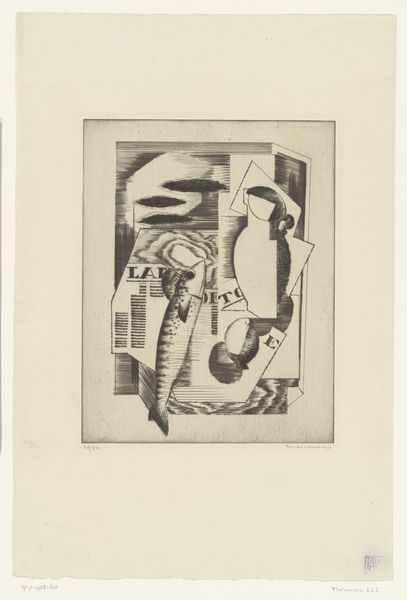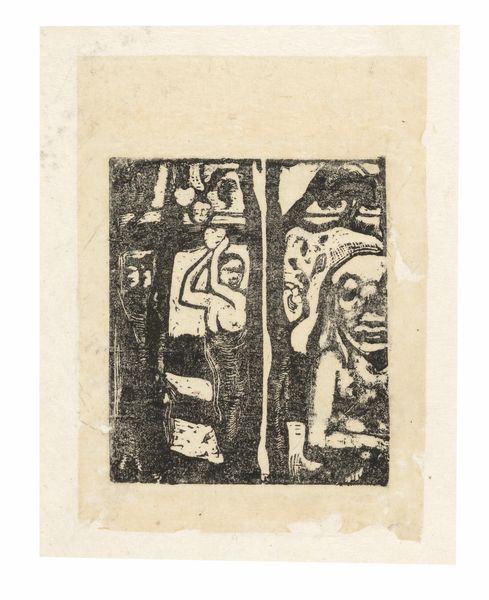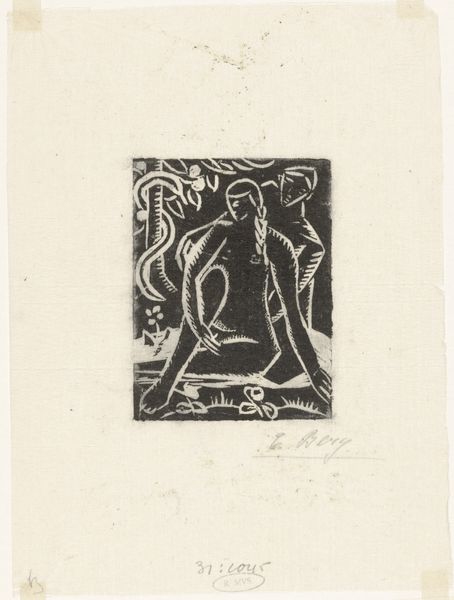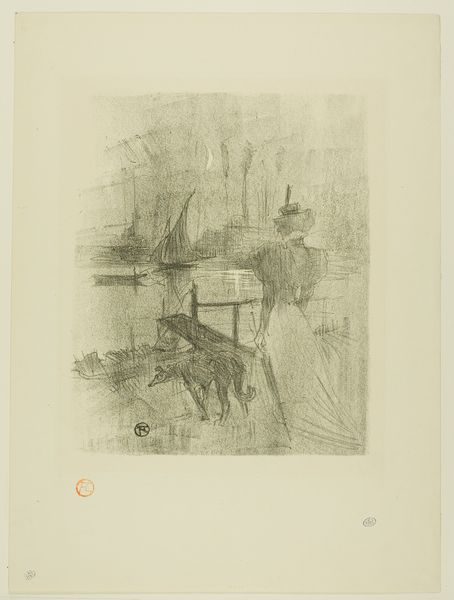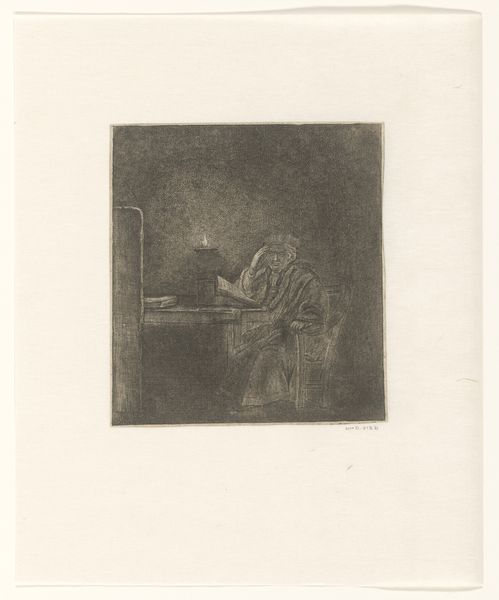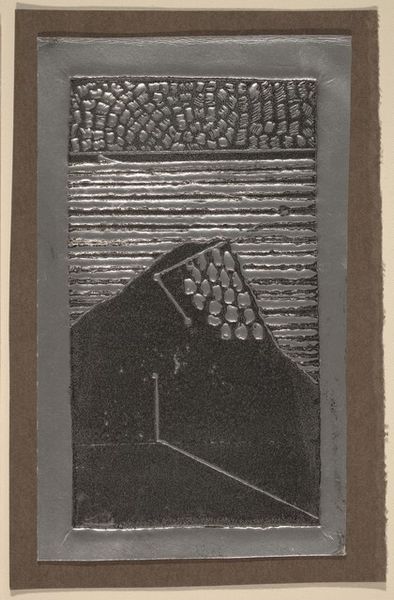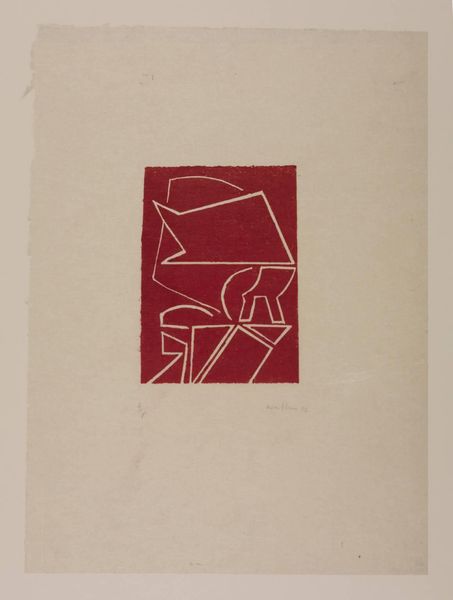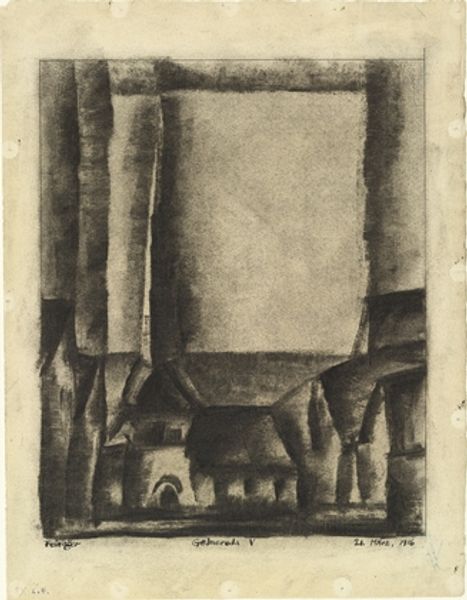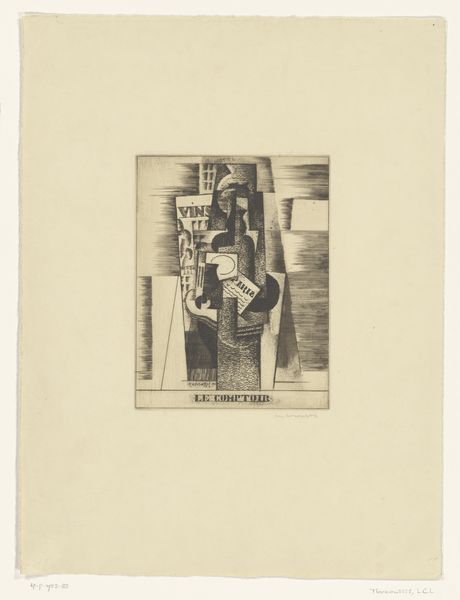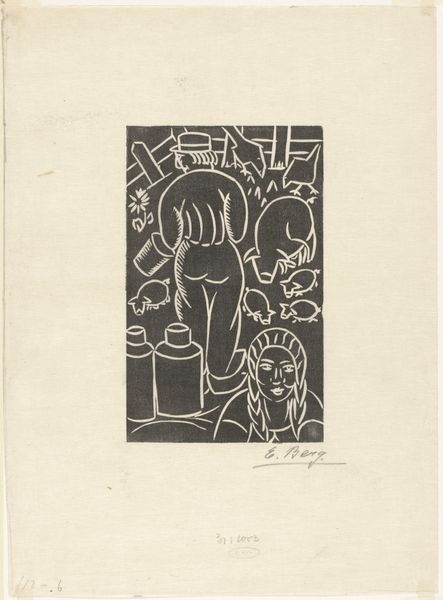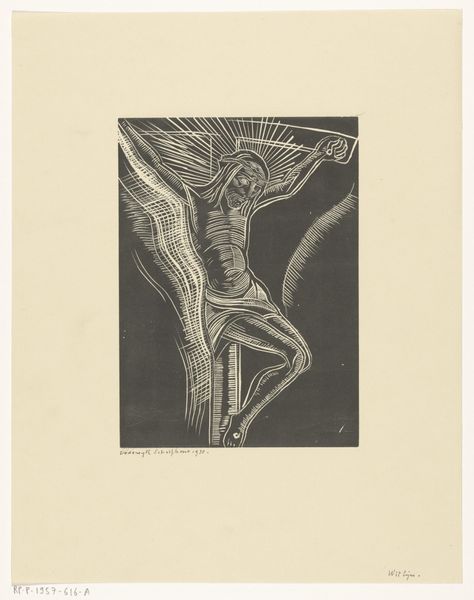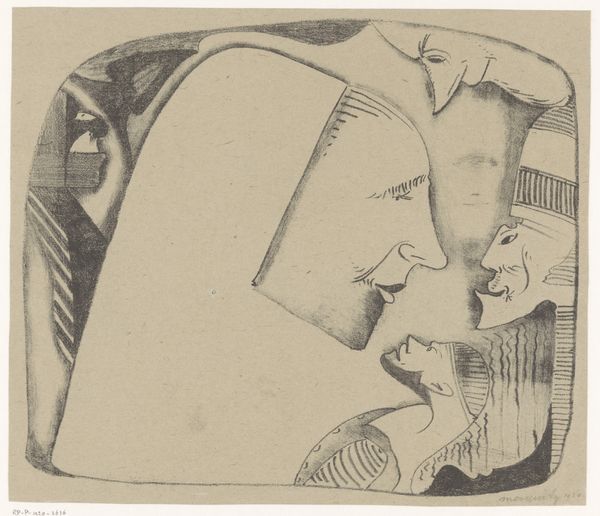
graphic-art, print, engraving
#
graphic-art
# print
#
symbolism
#
engraving
Dimensions: height 130 mm, width 73 mm
Copyright: Rijks Museum: Open Domain
Editor: This engraving from 1915, "Death Kicking Shut a Grave" by Wijnand Otto Jan Nieuwenkamp, presents a rather grim figure of death quite literally kicking shut a grave. It feels surprisingly… assertive? Almost angry. How do we unpack an image like this in its historical context? Curator: Indeed, its assertive tone demands investigation, particularly in light of the socio-political upheavals of the time. Consider 1915 – World War I was raging. This image wasn’t created in a vacuum. How might widespread death and societal anxieties shape artistic representations of death itself? Editor: So, you’re saying this isn't just a symbolic rendering of death, but a direct response to, or reflection of, a specific historical trauma? Curator: Precisely. The “assertive” act of kicking, rather than a quiet reaping, may represent a societal frustration or even outrage at the scale of death, a visual rebellion against the seemingly endless loss. Consider the function of art in times of crisis – it can become a vital form of public commentary. Editor: That makes sense. It almost feels like a critique of the institutions or powers that led to that devastation. The symbolism then, is layered with a commentary on power. Curator: Exactly! Symbolism doesn't exist apart from its cultural backdrop. By situating Nieuwenkamp’s work within its specific historical moment, we gain access to the deeper public anxieties and socio-political dialogues it engages with. What do you make of the medium, printmaking, in this context? Editor: I guess prints would have allowed for wider distribution and a broader public dialogue? Making the political commentary even more potent? Curator: An astute observation! Now you’re thinking like a historian. Understanding how social forces interact with artistic expression and dissemination gives you a fuller and richer understanding. Editor: Wow, that totally reframes how I see this piece. It's not just about death, but about societal responses to massive loss. Curator: Exactly. History provides us with a framework, or lens to see through and makes the artist’s commentary clearer, sharper, and more relevant to us now.
Comments
No comments
Be the first to comment and join the conversation on the ultimate creative platform.
